Jyrgalan Tourism Festival –
Community, Culture, and Kyrgyzstan
Kyrgyzstan is a small landlocked country in Central Asia. Try again.
Manas nomad culture of Kyrgyzstan yurt 天山 vodka. No, not quite.
Hiking In Heavenly Mountain, Land Of The Snow Leopards. Lovely, still no.
Community. Culture. Collaboration. We’ll start there. A small village, once an important coal mining center but now a place of limited economic opportunity. A valley of verdant springs and alpine winters, located in a country that sends up to 20% of its entire population abroad to find work that brings home the equivalent of nearly one-third of the country’s GDP.
This is Jyrgalan. This too is Jyrgalan. How, then, the transition from quiet village in the hills to successful ecotourism base? Community. Culture. Collaboration.
Community. A coalition of actors, working together to turn this village Jyrgalan into a major attraction for the visitors that are coming to Kyrgyzstan in ever-increasing numbers to experience the mountains, the nature, the culture, and the people. Trip to Kyrgyzstan, a countrywide tour agency helping shape the direction of development in Jyrgalan. USAID’s BGI Project, which handpicked Jyrgalan and three other projects out of 50+ applications from around the country, providing funding and logistical support for promising tourism prospects. Emil Ibakov, head of the Jyrgalan Destination Management Organization, but also a resident of the village itself. His wife Gulmira, who manages the village’s newly opened guesthouse; and the neighbor across the street who prepares breakfast every morning for the guests. The guys down the street running a small shop (which sells, or so I’m told, a mean bottle of Kyrgyz Cognac). The list goes on, and on, and on.
The Jyrgalan Tourism Fest, to celebrate the start of the free-ride / off-piste skiing season in the area, brought the community together in a very literal sense to dance, sing, and listen to one or two speeches. But the development, the move towards stepping into the tourism industry as an eco-resort for all seasons, is implemented with the aim of working with the entire community in a broader sense to ensure that everyone benefits from a potential influx of tourists and the tourism dollars they bring along.
Culture. Really, in Kyrgyzstan, I often feel this point and the last are extensions of one another. Even the very name Kyrgyz is held to stem from a Turkic word for the number forty: kyryk. As the story goes, the forty disparate tribes united to fend off the advances of the marauding Mongolic armies of the Khitan and in doing so established the beginnings of modern Kyrgyz identity.
In modern Kyrgyzstan this idea of tribe and clan still plays an important role but one that, as an outsider, I find incredibly inaccessible in trying to understand the practicalities and implications of. Like many aspects of the country it’s something I’ve come to accept without fully comprehending, to experience without really seeing. To myself, as I expect to many other visitors to the country, Kyrgyz culture is accessible in other more tangible ways. The Manas epic, a sort of founding myth often compared to the Iliad that probably has a lot more in common with the Aeneid, and the awesome-to-watch Manaschi who study and narrate this traditional oral history.
The yurts, tents that can be erected and disassembled as the seasons change and the pastures ebb and grow; and the handmade textiles that decorate those yurts to serve as rugs, blankets, saddle bags, and these days as works of art as well.
The game of Ordo, which to all appearances is ‘jacks’ played with sheep knuckles but which I’m assured has complex and varied levels of strategy.
The ubiquitous kalpak hats and the regal elechek, a favorite of married old(er) ladies.
These are the cultural indicators that even the most out-of-touch visitor would be hard pressed to miss, and part of what makes the country (alongside those mountains, to be sure) such a visually evocative place to visit. But they also speak to something deeper about Kyrgyzstan, a pull that after too many months away sees me flipping through my Facebook feed hoping to find photos or pull out my hard drive to reminisce upon my own.

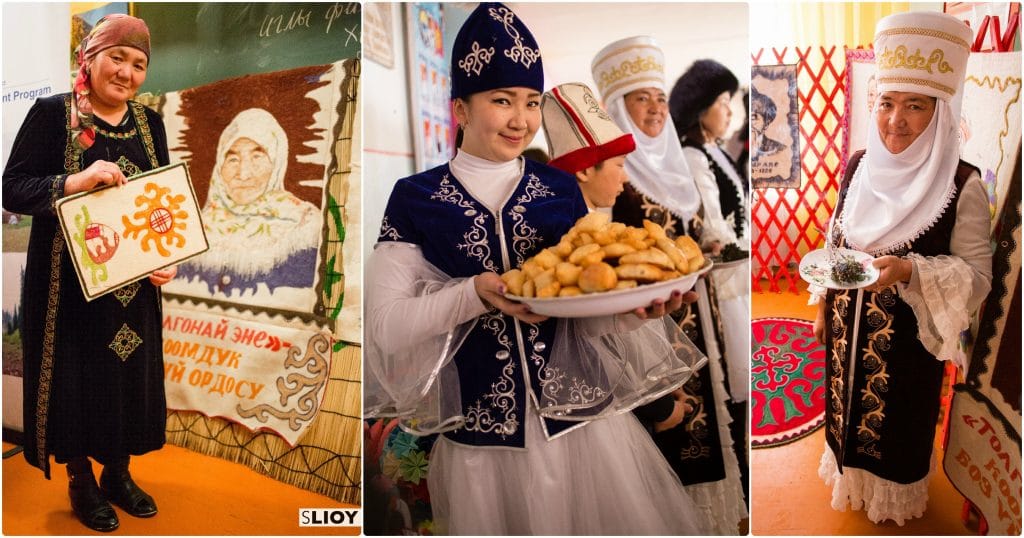
Collaboration. The difference in Jyrgalan, then, might be this. This combination of culture with a sense of community – and the welcoming appeal this brings to potential visitors. The experience of Jyrgalan Tourism Fest incorporating skiing and plov and music, to be sure. But also felt-working demonstrations to help villagers both young and old re-learn how to make traditional handicrafts, alongside masterclasses by a renown Russian blogger on how to promote ecotourism on social media and how to approach blogging in the extreme sports realm.
The fact that the village has every appearance of being a collaborative effort not only of the local community, but of interested actors in the tourism and development spheres that seem equally enthusiastic see that it gets done and done well.
The feeling that perhaps this will be the kind of place I go back to two or five or ten years later and that while the road may be in better shape and the guesthouse will almost certainly have grown, that essential feeling will not have changed of the entire community being invested in the sustained growth and working together to make that happen.
I’m excited about Jyrgalan, and can’t wait to see how it continues to grow.
Want to learn more about Jyrgalan and the ecotourism project being developed there? Be sure to read my earlier post #VisitJyrgalan – Backcountry Skiing in the Tien Shan, and check back this summer once the snow is all melted and I can do a bit more hiking in Kyrgyzstan.
Note that I was in Jyrgalan as a guest of the USAID-BGI project for the Jyrgalan Tourism Festival. All opinions and pontifications are, as always, my own.
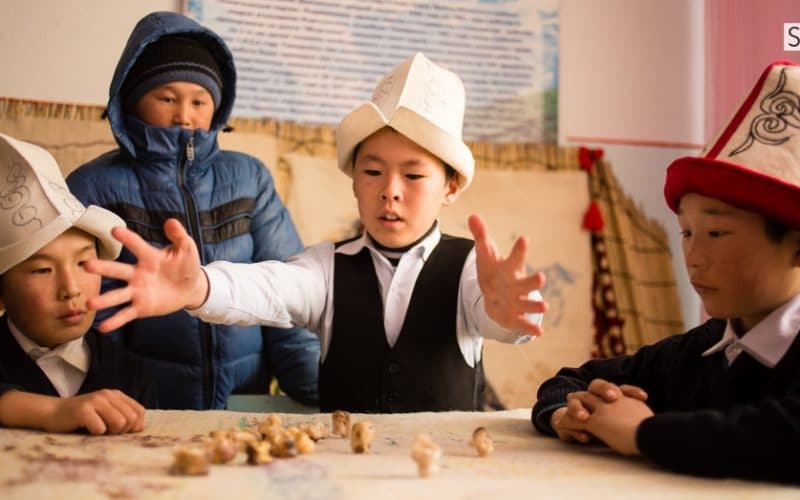

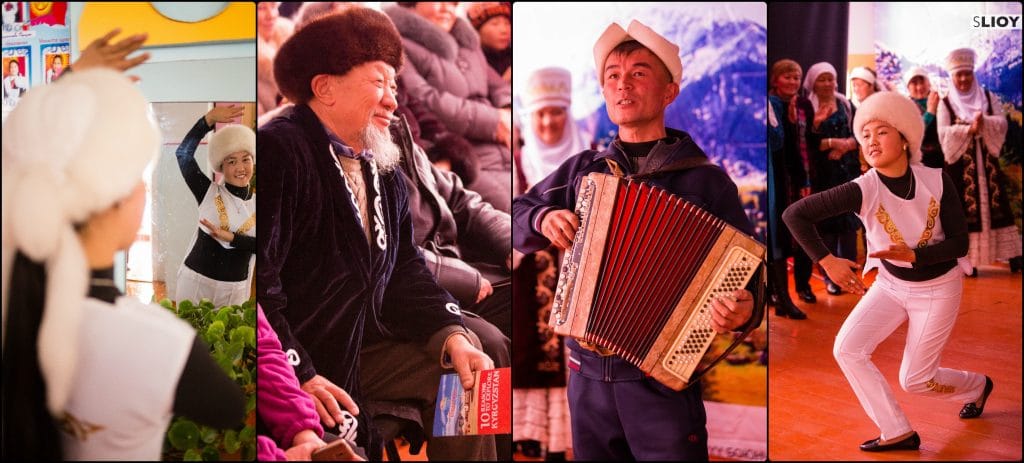





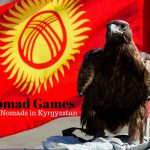
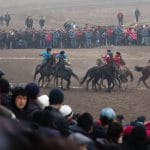
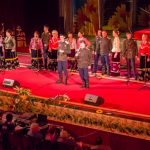
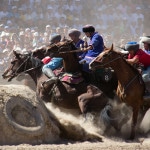
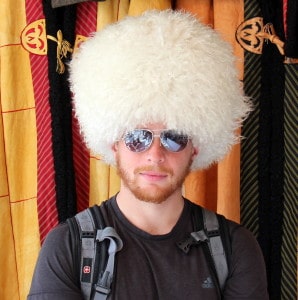
I absolutely love this post! Thanks so much for sharing a little slice of culture. It brightened my day 🙂
Thanks Carlie! In a beautiful bit of internationality, I also just cooked an exquisite pot of red beans back in capital city Bishkek – a bite of home I’ve not had in months, which perhaps you can appreciate.
Beautiful post! I am looking forward to read about the hiking once the snow melts though.
Aye, and I’m looking forward to seeing what these mountains look like Covered in greenery and wildflowers come spring!
I may have to take a trip here when I travel through Kyrgyzstan in a few months time
If you’re in Karakol already, it’s an easy extra step and well worth it for the rural atmosphere. Ski season usually runs through March/April sometime, and trekking picks up in June or so.
Wow this is somethingi knew nothing about. Lokks fun!
It was an excellent weekend! especially when combined with the skiing stuff from the last post.
Sounds like something beyond many things I know 🙂 Great way to start a post also, love it!
Glad you enjoyed, the intro especially. I knew what I wanted to say with this one but not how to get into it, so it actually took a bit of time to come up with.
Wow what an experience, I love how you’re able to see authentic culture up close